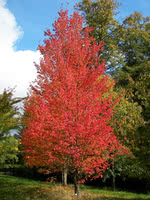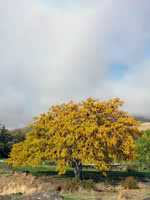Mon-Fri 9am - 5pm Mountain time
Red Maple vs Thornless Honeylocust
Acer rubrum
Gleditsia triacanthos inermis
Red Maple is a beautiful deciduous tree that blooms with small red flowers in the spring. It is one of the first trees to change colour in the fall, turning a brilliant reddish-orange colour. It is one of the most common and widespread maples in North America.
Red Maple is a great choice for parks and large gardens where there is ample room for its root system.
Important note: Red Maple leaves are toxic to horses if ingested in quantity.
Thornless Honey Locust makes an excellent shade tree with its lacy foliage and dappled shade. The leaves are honey-yellow, light and airy, providing interesting color and texture to your landscape. This variety is thornless, and the seeds and pods provide food for wildlife such as deer and squirrels.
The Thornless Honey Locust is tolerant of drought, various soil conditions, and even road salt.
Red Maple Quick Facts
Thornless Honeylocust Quick Facts
Toxicity: wilted leaves toxic to horses
In row spacing: 2.4 - 4 m (8 - 12 ft)

